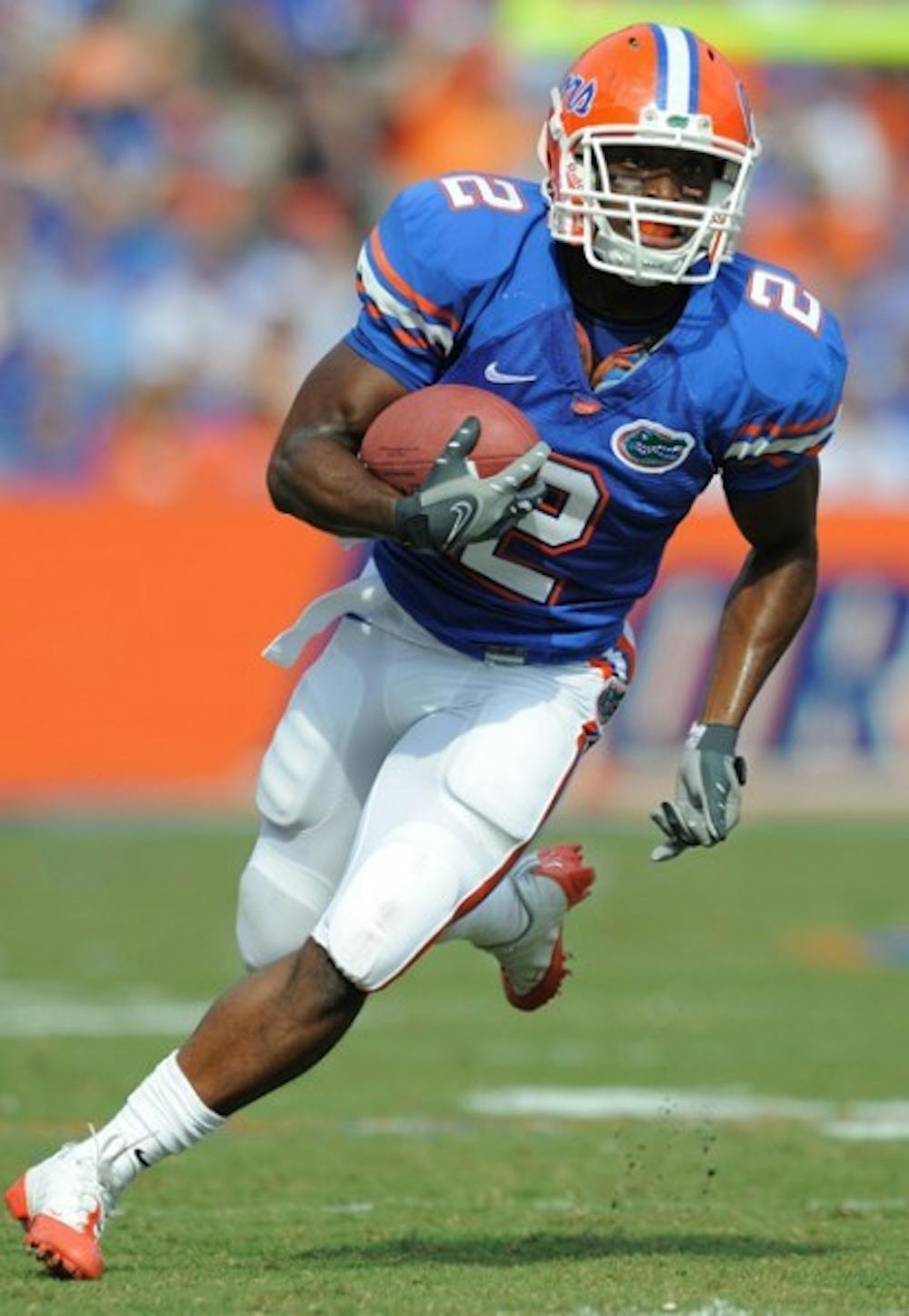The departure of Tim Tebow has raised some doubts about the Gators’ offense.
With John Brantley coming into the season as a first-time starter with unproven receivers by his side, some are wondering how good this unit can be.
The running backs will have a big part in answering that question when No. 4 Florida begins its season Saturday against underdog Miami (Ohio) at noon.
In 2009, Tebow led the team with 217 rushing attempts — 118 more than starting running back Jeff Demps. This year the offense should look different with Brantley at the helm. As more of a pocket passer, he will rely on his arm rather than his legs.
“I’ll probably be touching that ball a little bit more now that Tim is gone,” Demps said. “We probably have to get that third-down-and-one or fourth-down-and-one call now.”
Short-yardage situations are just one of the duties that the backs will be more involved with this year.
Last season, the Gators scored a touchdown when entering the redzone just 51 percent of the time, partly because teams knew they would call a Tebow run more times than not. But with him gone, the coaches have installed the I-formation into this year’s offense to add another dynamic.
“We never used the ‘I’ last year,” running back Emmanuel Moody said. “It will help out a lot with just mixing up and putting the defense on its toes. They won’t really know how to line up with us when we go from the spread to the ‘I.’”
The constant runs up the middle with Tebow last season resulted in an average of 4.2 yards per carry, much less than those of Demps (7.5), Moody (6.5) and Mike Gillislee (8.6).
The Gators will depend on their runners’ big-play ability to make up for the loss of wide receiver Riley Cooper and tight end Aaron Hernandez, who accounted for 55 percent of the team’s receiving yards last season
New running backs coach Stan Drayton has helped them with the transition to a more physical role.
The backs have focused on developing a fearless mentality, keeping their pad level low and holding onto the ball to prepare for short-yardage situations.
“I feel like we always had [that mentality],” Moody said.
Demps, Moody and Gillislee are all expected to receive playing time this season, each bringing a different skill set.
Demps is the speedster that specializes in runs away from the interior of the line. Moody (5-foot-11, 215 pounds) is the biggest of the three and will be utilized more on inside runs. And Gillislee is a combination of the two.
Chris Rainey’s switch to wide receiver has opened the door for Gillislee to enter the backfield rotation.
The Gators’ depth is a positive, but it may also work against the running backs in their quest to become the first UF player to rack up 1,000 rushing yards since Ciatrick Fason in 2004.
Or it could just mean that two of them will accomplish the feat.
“There’s a chance,” Moody said. “There’s definitely a chance.”






